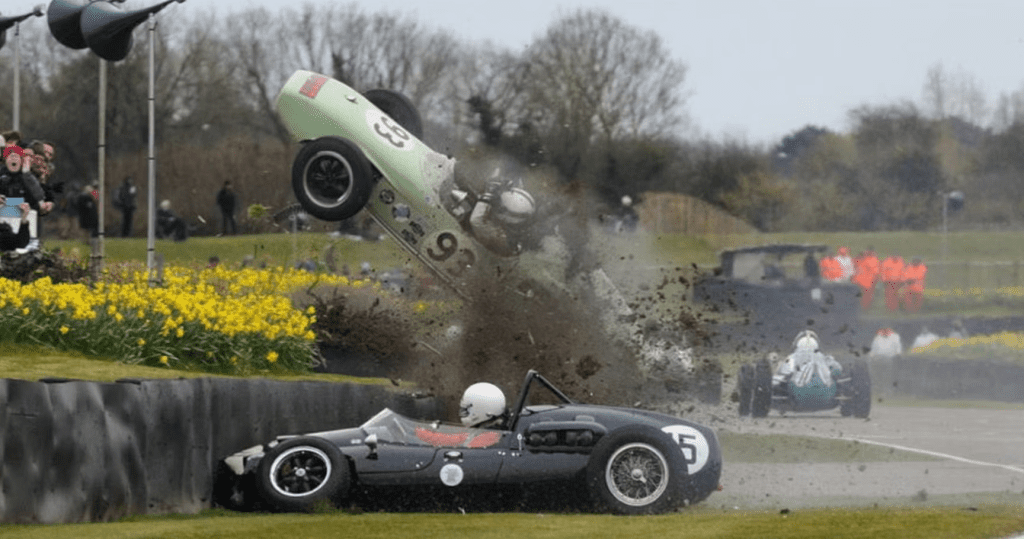Motorsport Safety: Innovations and Improvements Over the Years

Motorsport, a realm where speed and competition converge, has always been thrilling for both participants and spectators. However, this high-speed world comes with inherent risks, making safety paramount. Over the years, significant innovations and improvements in safety protocols and technology have dramatically enhanced the well-being of drivers, teams, and fans alike. This article delves into the pivotal advancements that have reshaped motorsport safety, reflecting the industry’s commitment to preserving lives while maintaining the sport’s exhilarating spirit.
The Evolution of Safety Gear
Safety gear is the first line of defense in protecting drivers from potential harm during high-speed races.
Helmets and Fire-Resistant Suits
The introduction of advanced materials has led to the development of lighter, stronger helmets and fire-resistant suits, significantly reducing the risk of head injuries and burns.
HANS Device
The Head and Neck Support (HANS) device, introduced in the late 20th century, has been instrumental in preventing whiplash and fatal neck injuries during collisions.
Reinventing Track Design
Track design plays a crucial role in motorsport safety, with continuous advancements aimed at reducing the severity of accidents.
SAFER Barriers
Steel and Foam Energy Reduction (SAFER) barriers, installed on track walls, absorb and dissipate energy upon impact, reducing the force transferred to the driver.
Run-off Areas
Expanding run-off areas with high-friction surfaces has provided drivers with a safer buffer during off-track excursions, minimizing crash impacts.
The Role of Car Design and Construction
The very construction of racing vehicles has undergone revolutionary changes to enhance driver safety.
Monocoque Chassis
The adoption of the monocoque chassis, made from carbon fiber and other composite materials, has increased car rigidity and crash protection without significant weight gain.
Energy-Absorbing Crumple Zones
Strategically designed crumple zones ensure that the car absorbs and dissipates crash energy, protecting the driver’s cockpit from severe impacts.
Advancements in Medical Response and Trackside Safety
Rapid medical response and trackside safety measures are critical components of overall motorsport safety.
Medical Centers and Response Teams
Modern circuits are equipped with on-site medical centers and rapid response teams, ensuring immediate medical attention in the event of an accident.
Extrication Techniques
Improvements in extrication techniques and tools have expedited the safe removal of drivers from wrecked vehicles, crucial in emergency medical situations.
Innovations in Race Control and Monitoring
Technological advancements have significantly enhanced race control’s ability to monitor races and respond to incidents.
Telemetry and Data Analysis
Real-time telemetry allows race control to monitor vehicle performance and driver vitals, enabling preemptive action to prevent accidents or ensure swift post-incident responses.
Virtual Safety Car (VSC)
The VSC system is deployed to moderate race pace during hazardous conditions on the track, reducing the likelihood of accidents without fully stopping the race.
Tire Safety Developments
Tires are a critical component of motorsport safety, with ongoing innovations ensuring optimal performance under extreme conditions.
Tire Compounds and Durability
The development of various tire compounds for different weather and track conditions has improved grip and durability, reducing the risk of tire-related accidents.
Tire Pressure Monitoring Systems
Advanced monitoring systems provide real-time data on tire pressure and temperature, allowing teams to make informed decisions to prevent tire failures.
Harnessing Simulations and Virtual Testing
The use of simulations and virtual testing has become a cornerstone in developing and evaluating safety measures without real-world risks.
Crash Simulations
Sophisticated computer simulations predict the outcomes of crashes, informing safer car designs and safety equipment without endangering lives in testing.
Aerodynamic Testing
Virtual wind tunnel testing helps engineers design cars that are not only fast but also stable and safe at high speeds.
The Future of Motorsport Safety
As motorsport continues to evolve, so too will the approaches to ensuring safety, with emerging technologies promising even greater protection.
Autonomous Safety Features
The integration of autonomous driving technologies, such as automatic braking and collision avoidance systems, could further enhance safety in motorsports.
Wearable Technology
Wearable tech could provide real-time monitoring of driver biometrics, offering early warnings of potential health issues during races.
Conclusion
The journey of safety innovation in motorsport is ongoing, with each advancement building on the last to create a safer environment for everyone involved in the sport. From the development of personal protective gear to the design of cars and tracks, every aspect of motorsport has been touched by the pursuit of safety. As technology continues to advance, the motorsport community remains committed to exploring new ways to protect drivers, ensuring that the thrill of racing is matched by rigorous safety standards.